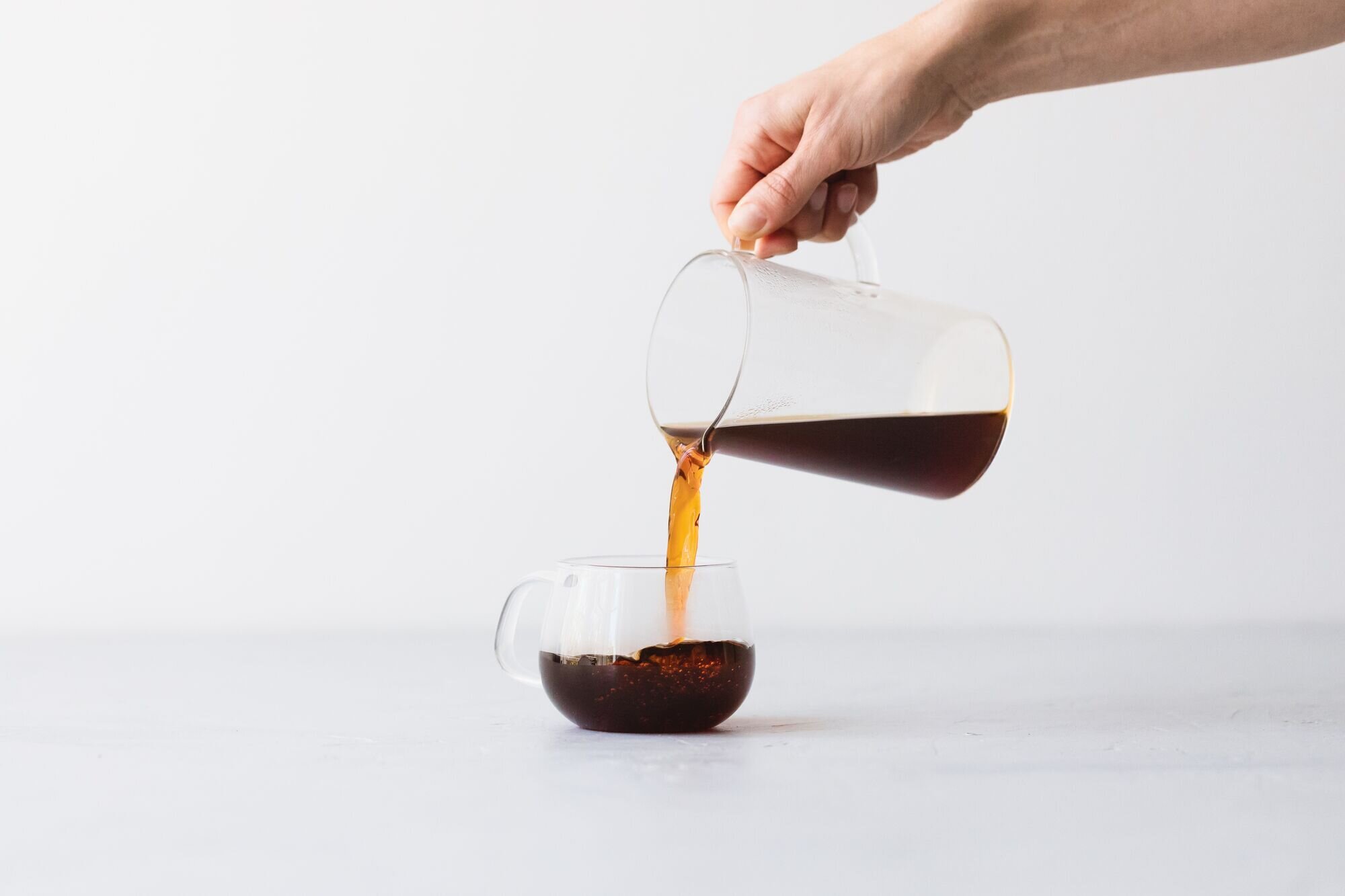The Art of the Blue Bottle Pour Over
A Brief(ish) History
James Freeman founded Blue Bottle in 2002 with a simple yet revolutionary idea: to brew coffees to order using the pour-over technique.
At the time, American cafe culture was awash in espresso drinks. Any brewed coffees were prepared in multigallon batches before anyone ordered them and then dispensed from tall urns. Freeman sought something both more flavorful and more personal.
An unlikely start
The pour over has a long history of sudden, breathtaking innovation. The method initially gained traction with the invention of the first paper filters and ceramic drippers in the early 1900s. A German housewife named Melitta Bentz had grown frustrated with the percolator, the dominant method of the era, so she stuffed some of her son’s blotter paper into a tin pot into which she had banged a few holes. On the strength and clarity of that first modern pour over, she went on to build the Melitta-brand empire. But the art of the pour-over technique didn’t flourish until later in the twentieth century, in Japan, where coffee came to represent modernity itself. In pursuit of its perfect expression, coffee masters performed pour overs at kissaten, small cafes where they tailored not just the pours but also the choice of cups to each customer.
In 2002, James knew nothing of Japanese coffee methods. He only knew he didn’t like stale coffee tapped from large urns. He had chanced upon pour overs at a handful of coffee shops in Santa Cruz while studying philosophy at the local university. He had also seen photographs of London’s pioneering Monmouth Coffee, which opened in 1978 with a pour-over bar. “I liked that for-you approach,” he says.
An Evolution in Technique
At his first Blue Bottle outposts, including an outdoor stand at San Francisco’s Ferry Plaza Farmers Market, James did his best imitation of the grainy pictures of that Monmouth Coffee bar. His methods were, as he now admits, “pretty crude.” Using a stainless-steel milk-steaming pitcher, he poured hot water over freshly ground coffee—in one slow pour. If he measured anything, he used cups, not a gram scale. Mostly he went on intuition.
It worked. Although his coffees required long waits (a good pour over takes about five minutes), thanks to his delicious results, his stand quickly drew lines long enough to put Blue Bottle almost immediately on the map.
Then one day soon after his stand opened, Jay Egami, a Japanese coffee expert, came to see what the buzz was about. As an importer for UCC, a leading Japanese coffee company, Egami knew all about Japanese pour overs—and saw that James had much to learn. “There wasn’t much pour-over technique. Just, pour,” Egami said recently, chuckling at the memory. But in that knowledge gap, Egami saw an opportunity.
The moment everything changed for Blue Bottle came a few days later, when Egami stopped by James’s Oakland roasting shed to share catalogs of Japanese coffee tools. James opened one catalog to the Hario V60 swan neck kettle, whose slender spout is still considered a standard for controlling the all-important pour rate.
“My head just about exploded,” James recalls. “I thought (A) this is impossible, and (B), so cool. I have to have one.” He promptly imported the very first Hario kettle into the United States.
That kettle became a portal, a gateway onto the path toward pour-over mastery. Although he fumbled with it at first, with practice, James discovered the benefits of pouring the water more slowly and evenly, in a series of measured pours instead of all at once. “Everything got much better,” Egami recalls.
Tools, Tools, Tools
Today, we time our pours to the second and weigh the coffee and water to the tenth of a gram. To brew, we use custom Blue Bottle drippers, filters, even glass carafes—and not just to display our logo. We designed each tool to reveal a coffee’s flavors with that much more clarity.
For our ceramic dripper, we worked with a team of engineers who chose the dimensions of its forty interior ridges, its flat bed, and its four-millimeter spout to harness the physics of water’s capillary action and laminar flow, all of which ensure the water moves efficiently across the ground coffee for the most even extraction. To manufacture it, we looked to the Kyuemon Factory in the small Japanese town of Arita, which has a history of making fine ceramics going back some four hundred years— and the mastery to manufacture the dripper to its delicate specs.
Our proprietary filters do more than just nestle flawlessly into those drippers. Because of their bamboo fibers, they also impart no unpleasant papery taste to the cup and require no prewetting.
For our glass carafes, we worked with the legendary Japanese company Kinto to create a vessel with the ideal height and slim walls for the best coffee—and the most comfort.
Our current pour-over formula may seem, we acknowledge, a bit intimidating. That’s a big reason we built our training labs in San Francisco, Los Angeles, New York, Tokyo, and Seoul—to give every barista ample space and time to practice it. Our Barista Method—the tools and the technique—has now become our most essential tool. It grants anyone who is curious about coffee almost immediate expert status by putting the finest cup within his or her reach.
Learn how to make a pour over in our brew guide and stay tuned for upcoming posts on the method that got us started. Above all, we invite you to savor the adventure.

